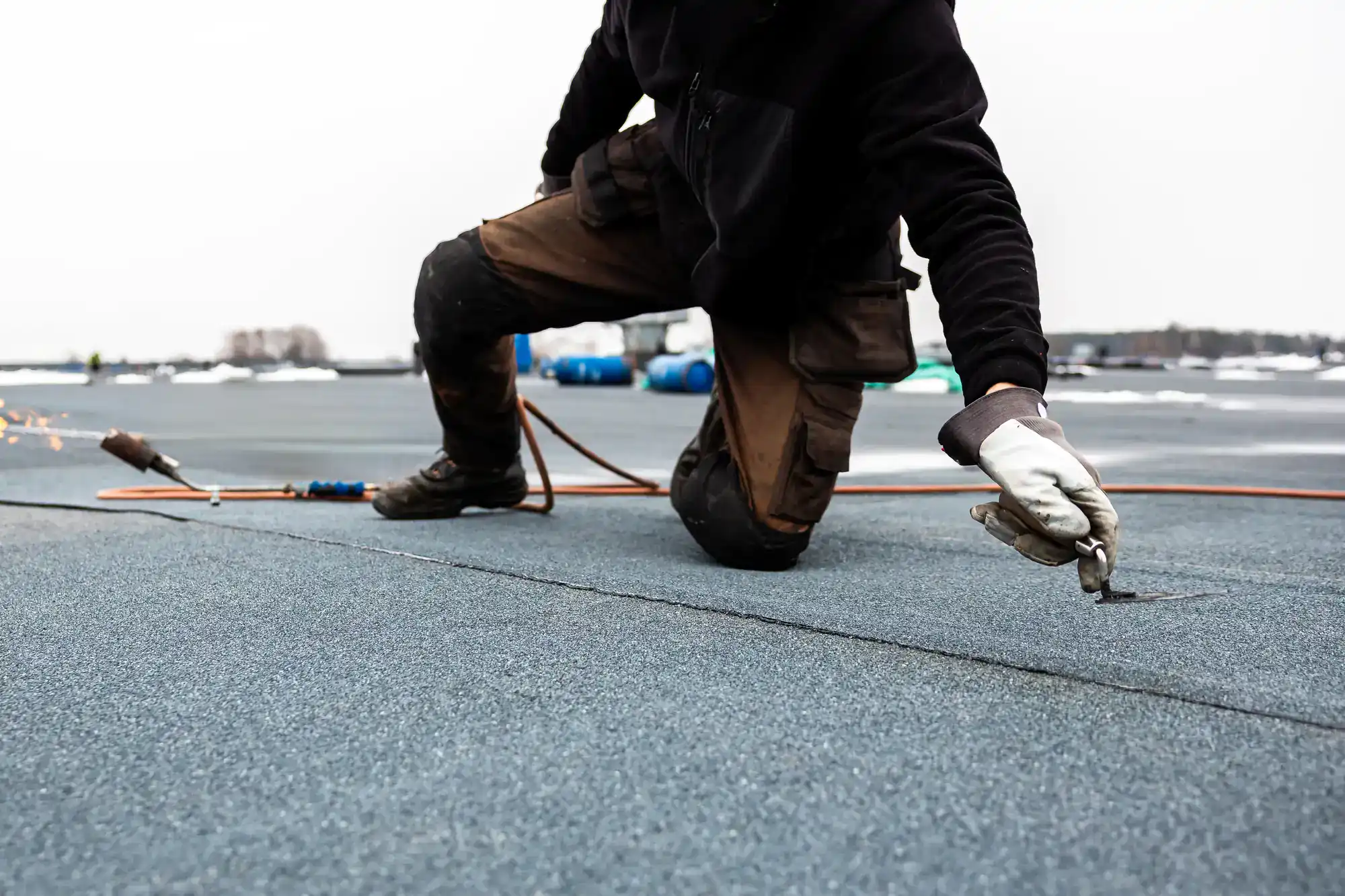
Hear from Our Customers
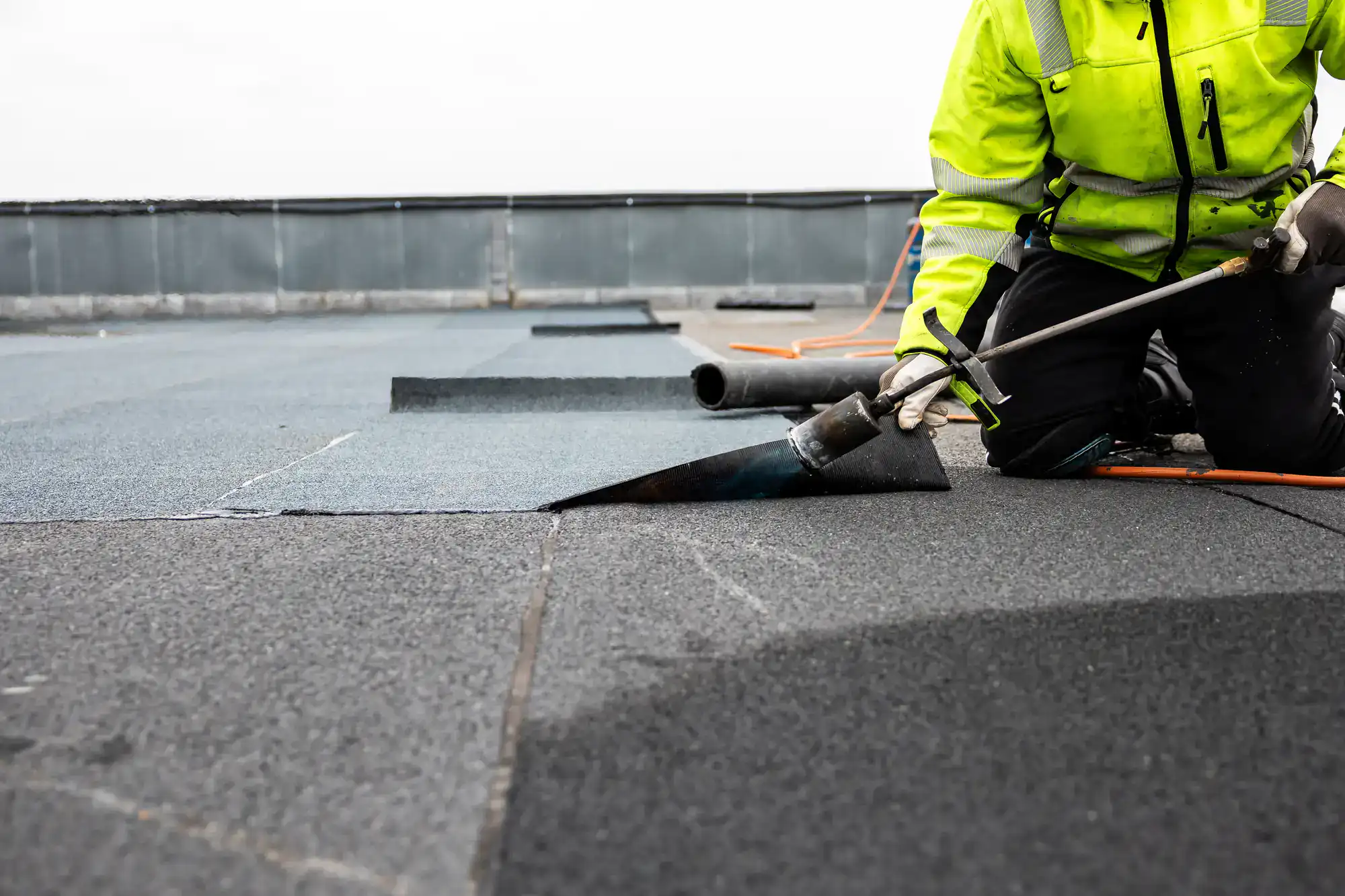
When your flat roof is properly installed with the right materials, you get 20-30 years of protection instead of constant repairs. No more emergency calls during storms or water damage eating into your property value.
You’ll see lower energy bills from reflective TPO membranes that deflect heat instead of absorbing it. Your insurance premiums stay manageable because your roof meets coastal building codes and actually performs when tested by Montauk’s weather extremes.
Most importantly, you can focus on your business or enjoy your property without that nagging worry about the next leak. A properly installed flat roof in Montauk should be the last thing you think about, not the first.
We’ve been protecting Long Island properties for over two decades. We’ve seen what happens when contractors use the wrong materials or cut corners on coastal installations.
That’s why we only install flat roofing systems designed for salt air, high winds, and the flooding that comes with living at the easternmost tip of Long Island. Our technicians are certified in TPO, EPDM, and modified bitumen installation, with warranties that back up our work for 15-30 years.
We’re not the cheapest option in Montauk, and that’s intentional. You’re investing in materials and installation methods that survive here, not just look good on paper.
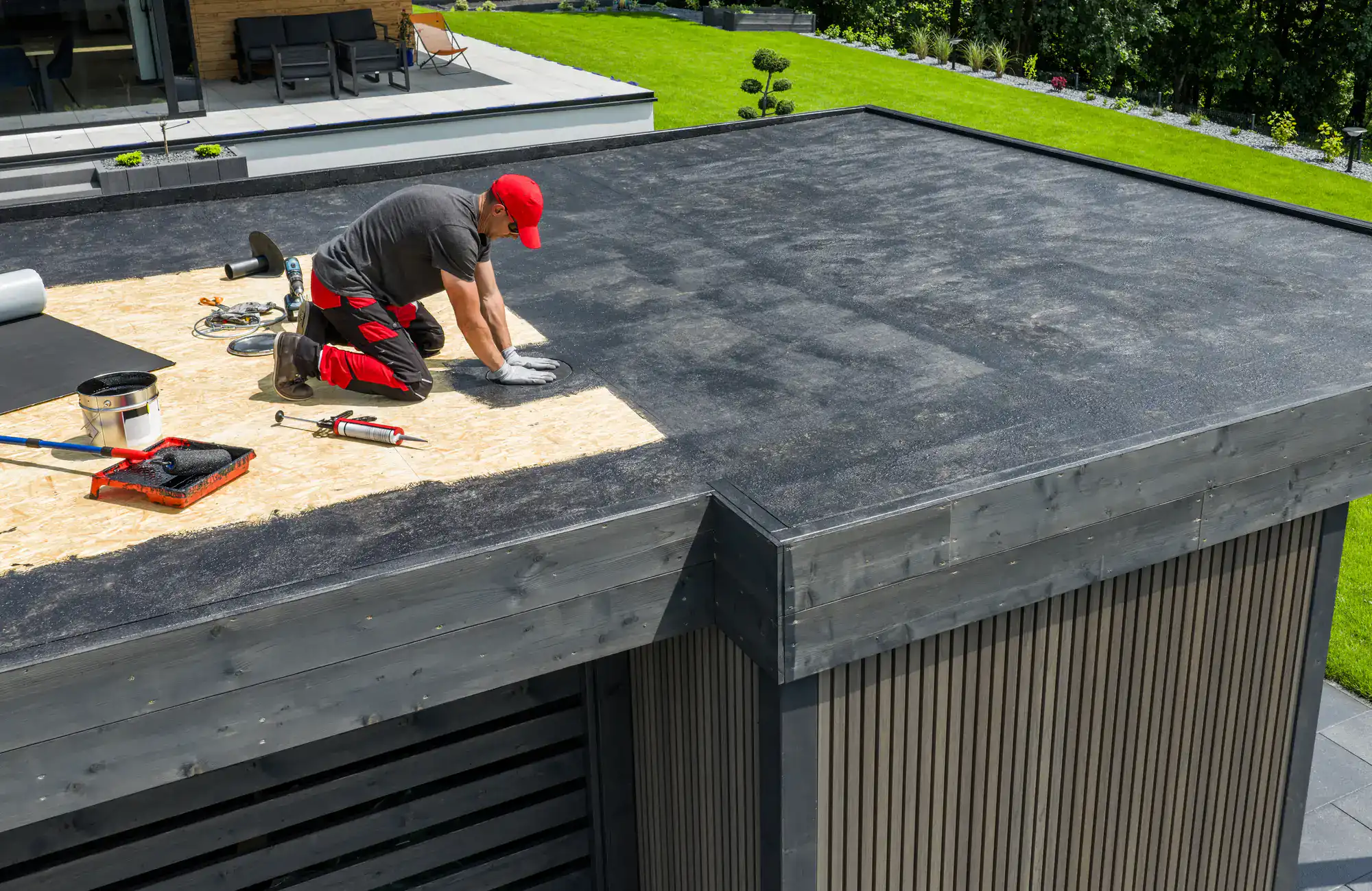
First, we inspect your existing roof structure and drainage to identify any issues that could compromise your new flat roofing system. Many leak problems start with poor drainage or structural issues, not the membrane itself.
Next, we remove old materials down to the deck if necessary, then install proper insulation and a recovery board designed for coastal conditions. The membrane installation comes next – whether TPO, EPDM, or modified bitumen – with heat-welded seams that create a completely watertight barrier.
Finally, we test the entire system and install proper flashing around all penetrations, vents, and roof edges. These details matter more in Montauk because wind-driven rain will find any weakness. You get a comprehensive warranty and maintenance schedule to keep your investment protected.
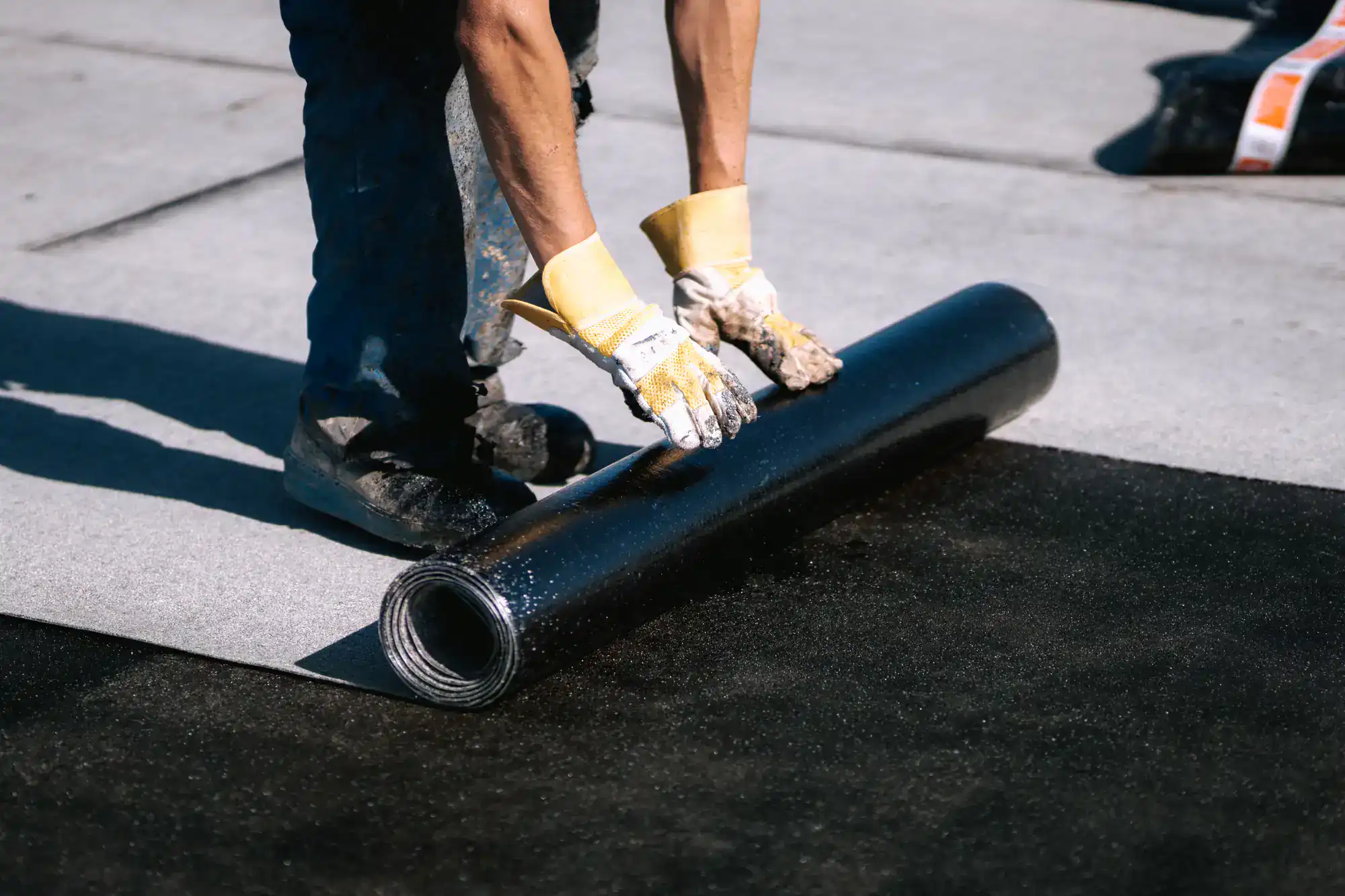
Ready to get started?
Your flat roofing installation includes certified materials specifically rated for coastal environments – not generic products that work fine inland but fail here. We use TPO membranes with fabric reinforcement, EPDM with proper adhesives for salt air, and modified bitumen systems designed for thermal cycling.
All penetrations get custom flashing details because standard approaches don’t work with Montauk’s weather patterns. We install proper drainage systems and overflow drains because standing water will destroy even the best flat roofing materials over time.
You also get a detailed maintenance plan that addresses the specific challenges of coastal flat roofs. This includes regular inspections of seams, drains, and flashing – the areas where 90% of flat roof problems actually start. Most contractors skip this part, which is why so many flat roofs fail prematurely in coastal areas.
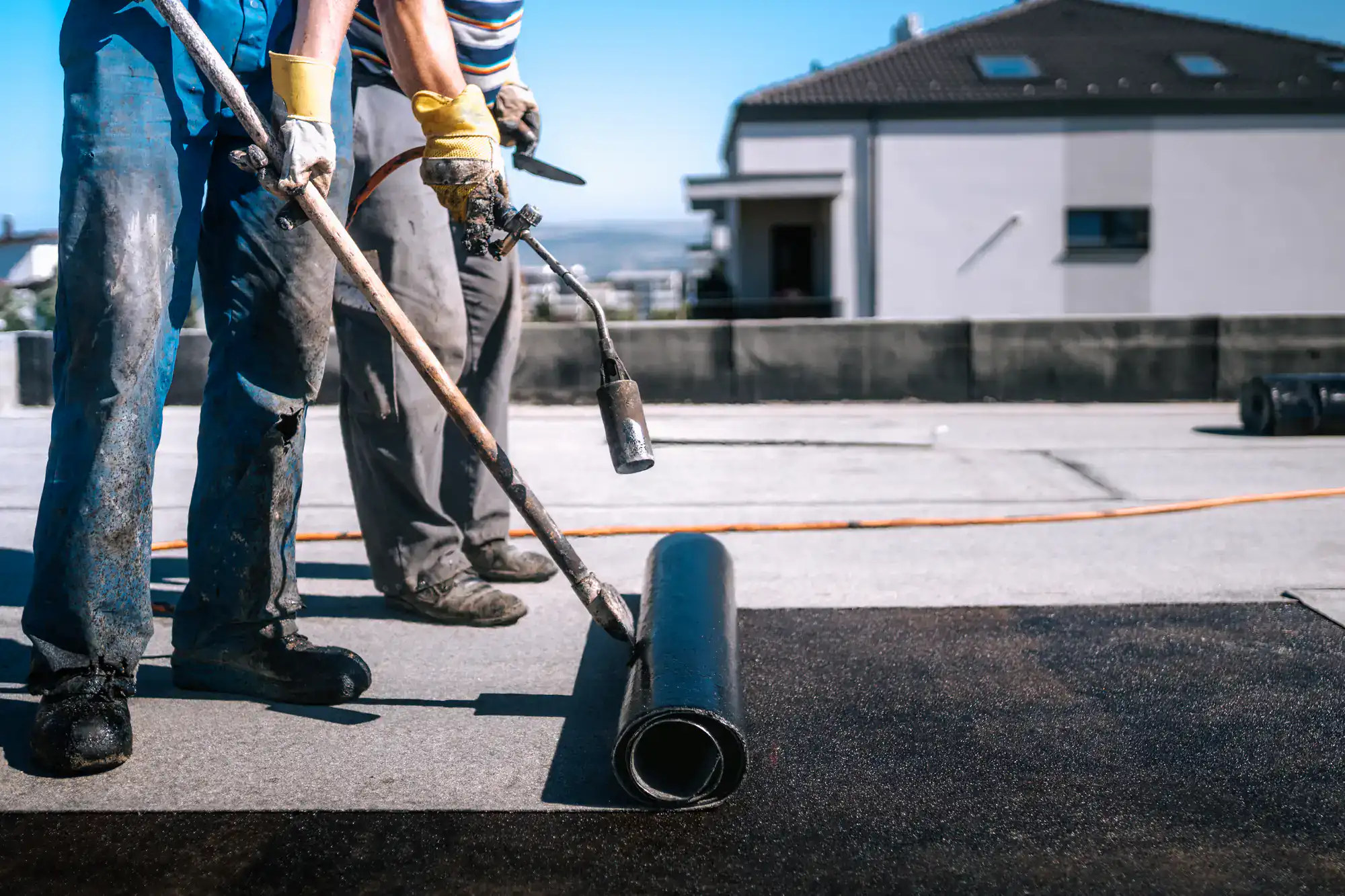
TPO roofing typically performs best in Montauk because it handles thermal cycling, UV exposure, and salt air better than other options. The white reflective surface reduces cooling costs while the flexible membrane expands and contracts without cracking during temperature swings.
EPDM rubber roofing is another solid choice, especially for residential applications. It’s less expensive than TPO but requires more careful installation around seams and penetrations. Modified bitumen works well for high-traffic commercial roofs but needs reflective coatings to manage heat absorption.
The key isn’t just the material – it’s proper installation with coastal-rated fasteners, adhesives, and flashing details. Many flat roof failures in Montauk happen because contractors use inland installation methods that can’t handle salt air and wind-driven rain.
A properly installed flat roof should last 20-30 years in Montauk, even with the coastal conditions. TPO systems typically hit the higher end of that range, while modified bitumen averages 15-20 years depending on maintenance.
The lifespan depends heavily on installation quality and regular maintenance. Flat roofs that get annual inspections and prompt repairs for minor issues often exceed their expected lifespan. Those that get ignored until major problems develop rarely make it past 15 years.
Weather isn’t the only factor – poor drainage causes more flat roof failures than storms do. Standing water will destroy any flat roofing material over time, which is why proper slope and drainage design matters more than the membrane type in many cases.
About 90% of flat roof leaks start at penetrations, drains, or roof edges – not the main membrane. HVAC units, vents, and equipment supports create weak points where water can enter if the flashing isn’t properly designed and installed.
Clogged drains are another major culprit. When drains back up during heavy rains, water finds its way into the smallest gaps around roof edges and penetrations. This is especially problematic during coastal storms when wind drives water horizontally instead of just falling vertically.
Seam failures happen too, but usually only when the roof wasn’t properly installed initially. Quality TPO and EPDM installations have heat-welded seams that are actually stronger than the membrane itself. Poor installation or using the wrong adhesives for coastal conditions causes most seam problems.
Flat roof replacement typically costs $8-15 per square foot in Montauk, depending on the material and complexity of your roof. TPO installations run $10-12 per square foot, while EPDM averages $8-10 per square foot for quality installations.
The wide price range reflects the difference between basic installations and coastal-grade systems. Cheaper quotes often skip critical details like proper drainage, coastal-rated fasteners, and adequate insulation. These shortcuts cost more in the long run through premature failures and higher energy bills.
Most flat roof projects in Montauk also require permits and inspections, which adds to the timeline and cost. However, this ensures your roof meets local building codes designed for coastal conditions. Insurance companies often require code compliance for coverage, making this a necessary investment rather than an optional expense.
Sometimes, but it depends on the condition of your existing roof and local building codes. Many areas allow up to two layers of roofing, but adding a third layer requires complete removal down to the deck.
Installing over existing roofing can save money on disposal costs, but it’s not always the best choice. If your current roof has drainage problems, structural issues, or extensive damage, covering it up just hides problems that will get worse over time.
We always inspect the existing roof structure before recommending overlay installation. Factors like insulation condition, deck integrity, and drainage performance determine whether overlay makes sense. In coastal areas like Montauk, it’s often better to start fresh with proper drainage and insulation designed for local conditions.
Yes, coastal flat roofs need more frequent inspections and maintenance than inland installations. We recommend professional inspections twice yearly – before winter and after storm season – to catch small problems before they become expensive repairs.
Regular drain cleaning is critical because salt air accelerates debris buildup that clogs drainage systems. Clogged drains cause standing water, which destroys flat roofing materials faster than any storm. Simple drain maintenance prevents most major flat roof problems.
You should also have seams and flashing inspected annually. Salt air and thermal cycling can cause small separations that let water penetrate. Catching these early means a simple repair instead of major damage. Most flat roof warranties require regular maintenance to stay valid, making this both smart business and a contractual requirement.
Other Services we provide in Montauk